Balancing act
This week in PE, we’ve been exploring different balances with a partner and using a bench. We had to make sure we could hold our balances for three seconds. Some were harder than others!
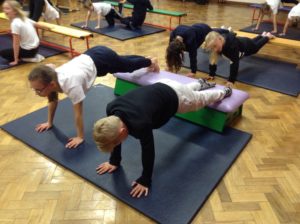

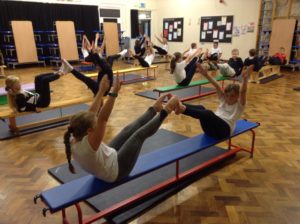
Healthy eating assemblies
The whole federation joined together to take part in an assembly about healthy eating last week. It was very exciting to see the other classes in the other schools! We had these booked in for Health Week last summer, which had to be cancelled.
The Leeds Health and Wellbeing Team delivered the assembly where we learnt all sorts of interesting things about keeping healthy and finished off with an interactive quiz.
Living and Learning: Odd Socks Day
Well done to everyone who came to school in odd socks today. It was a great way to start Anti-bullying Week! We talked about what the odd socks represented and the importance of respecting differences and treating everybody equally. We watched an assembly to show what Odd Socks Day is about. Click here to watch it.

Getting creative with clay
This week, we’ve been enriching our history topic with some clay work. We looked carefully at some pictures of stone age jewellery and how it advanced throughout the bronze and iron age.
We decided to use clay to recreate some jewellery from the stone age. We practised shaping the clay and created different shapes including bone and teeth shapes. Then we practised using a variety of tools to create patterns and add detail to each bead.
After that, we mixed some paints using similar colours available during this period. We’re looking forward to painting our jewellery to create our finished product.
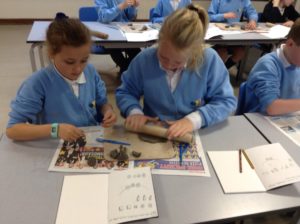



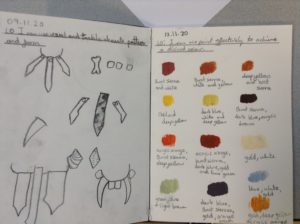
Hunter-gatherers
This week, we’ve been enjoying our history topic all about the Stone, Bronze and Iron Age. One of the words we’re learning from our history vocabulary list is hunter-gatherer. We found out that hunter-gatherers were pre-historic nomadic groups who would move around searching for food for basic survival.
Hunter-gatherers would rely on hunting and fishing animals and gathering for wild vegetation and other nutrients like honey, for food.
The early hunter-gatherers used simple tools. During the Stone Age, sharpened stones were used for cutting in order to hunt and gather.
So, we decided to become hunter-gatherers in our school grounds but focused on the gathering of plants!





We found out that there were lots of plants that hunter-gatherers would eat/drink that are not as popular today. Some of these include dandelions, beechnuts, acorns, nettles and hawthorns.
Christian Value: Friendship
This half term, our Christian Value has been friendship.
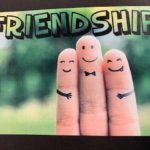
We have thought about how we can be a good friend and what we can learn from the Bible about friendship. We learned that Jesus teaches us to be a good friend to all – he told a story about how the good samaritan was a friend to someone who was supposed to be his enemy.
In our reflection areas, we had two challenges: a friendship flower and how to be a good friend.
For our friendship flower, we thought about who was a good friend or someone we were thankful for and wrote or drew a short thank you thought or prayer for them.

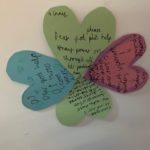

We took the friendship finger challenge and thought about all the things that make a good friend. We thought about how we could be a better friend.


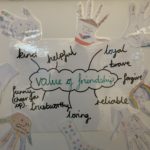
Foundation stage have also been learning all about our Christian value of friendship. They’ve created a friendship tree and friendship stones whilst thinking about the qualities they would like in a friend.



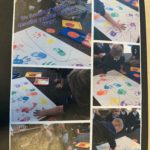
Look out for next half term’s Christian value: perseverance.
Zooming
Today, Miss Beatson taught the class via Zoom. It worked really well and we had a great maths lesson. Miss Beatson enjoyed seeing everyone and was impressed by how hard everyone was learning.
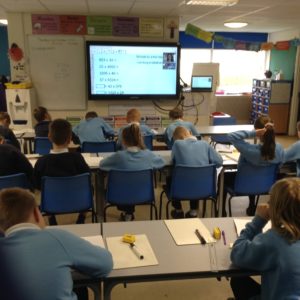
Sneezing runway!
In science, we’ve been learning about microbes, infections and diseases.
At the moment, due to Covid-19, we are trying to keep our distance and use tissues to sneeze and cough into to help reduce the spread of infection. We thought we would investigate this to see if it really does work.
First of all, we created a ‘sneezing runway’ with paper and metre sticks.

We then filled a spray bottle (a nose) with water and food colouring.
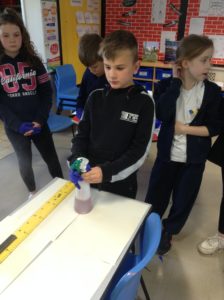
Then, we simulated a sneeze by squeezing the trigger once over the paper. Before ‘sneezing’ we predicted how far and wide the sneeze would go. Then we measured accurately with the rulers and recorded the result.
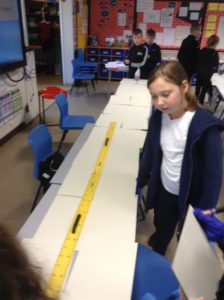
The next step was to observe what happens when we put our hand over our mouth when we sneeze; the microbes stay on our hands and can spread to anything we touch. We used a hand with a glove on it.

Finally, we wanted to observe what happens when we cover our mouth with a tissue during sneezing. We held a tissue directly in front of the spray nozzle. We predicted if this would reduce the distance a sneeze could travel and then made accurate measurements.
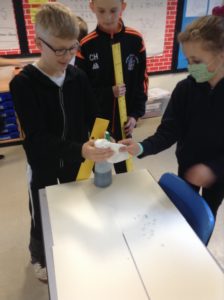
What did we find out?

When sneezing without any protection, the sneeze travelled 3.7m. With a hand it travelled 2m. With a tissue it travelled 1m.
To conclude, we can help reduce the spread of infection through sneezing if we use tissues and keep our distance!
Fabulous writing
This week, we’ve been writing non-chronological reports about imaginative creatures that live in South America. Erin’s writing clearly shows she has taken pride in her presentation and I love her ideas and creativity!
“The Kanzo Dragon is given its fascinating name by Zeek Cheffman, a beast-ologist from South America. He experienced a malicious attack from this giant beast and was lucky to make it out alive….”
“This blood-sucking reptile is part kangaroo and part dragon. Like the kangaroo, the Kanzo has a pouch, except it’s on the creature’s tail. It is believed that it’s used to carry dead bodies inside.”
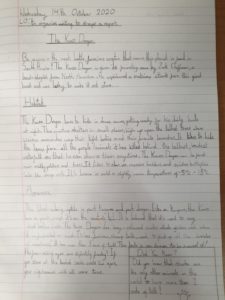

Classification
As part of our science learning about living things, we’ve been using classification keys to identify animals and we also created our own key to classify people in our class.
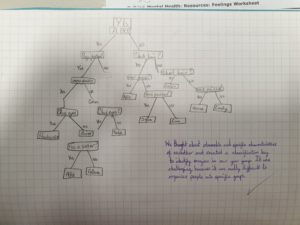

To find out more about classification click here.





